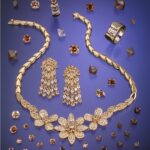There are several world-renowned, iconic necklaces, and Boucheron’s Question Mark necklace is undoubtedly one of them. For any serious jewelry collector, this piece is a must-have in their collection. In a groundbreaking move this year, Boucheron’s creative workshop has outdone itself by introducing an imaginative new design: the reversible Question Mark necklace.
This innovative creation stems from the ingenious inspiration of Ms. Hélène Poulit-Duquesne, Boucheron’s Global CEO, aiming to carry forward the innovative spirit of the house’s founder, Frédéric Boucheron, into the future. The reversible Question Mark necklace features an intricate mechanical system that allows the wearer to flip the necklace with a simple gesture – truly remarkable!
The Origins of the Question Mark Necklace
In the late 19th century, women were often constrained by complicated jewelry and clothing wear. In 1879, Frédéric Boucheron, with his extraordinary creativity, crafted a necklace that revolutionized traditional high jewelry design concepts. It featured a unique clasp-free design, allowing women to elegantly drape the necklace around their necks with a simple twist, without assistance from others, offering an unprecedented freedom in wearing.
Thanks to this avant-garde design, the piece became an exemplary work in the field of high jewelry. Its asymmetrical shape was unparalleled at the time, hence it was named the Question Mark necklace (Point d’Interrogation).
The first design sketch of the Question Mark necklace dates back to 1879 and is now treasured in the house’s archives. From its inception, this piece pioneered a new jewelry style with its simple collar and exquisite pattern, setting a standard for high jewelry design and craftsmanship. As the first clasp-free necklace, the Question Mark necklace employed an invisible spring mechanism.
This flexibility comes from the precise combination of numerous tiny components, exclusively developed by Boucheron’s workshop, creating an almost invisible mysterious beauty that showcases the house’s exceptional craftsmanship.
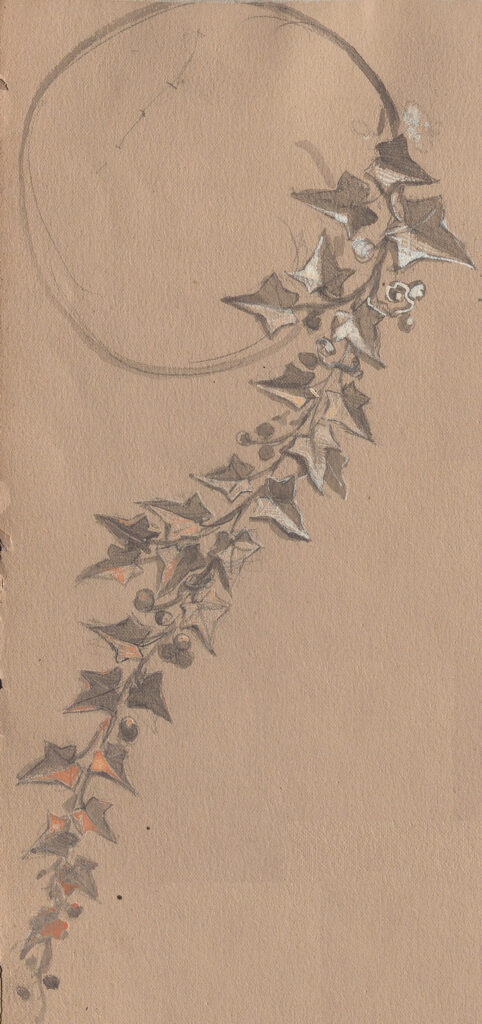
1879
©Boucheron Archives
The Question Mark necklace was one of Boucheron’s award-winning pieces at the 1889 Paris World’s Fair (Exposition Universelle). Initially, the house’s workshop produced only about thirty Question Mark necklaces. This jewelry piece quickly won favor with global clients, including members of the Russian royal family and major American industrial families.
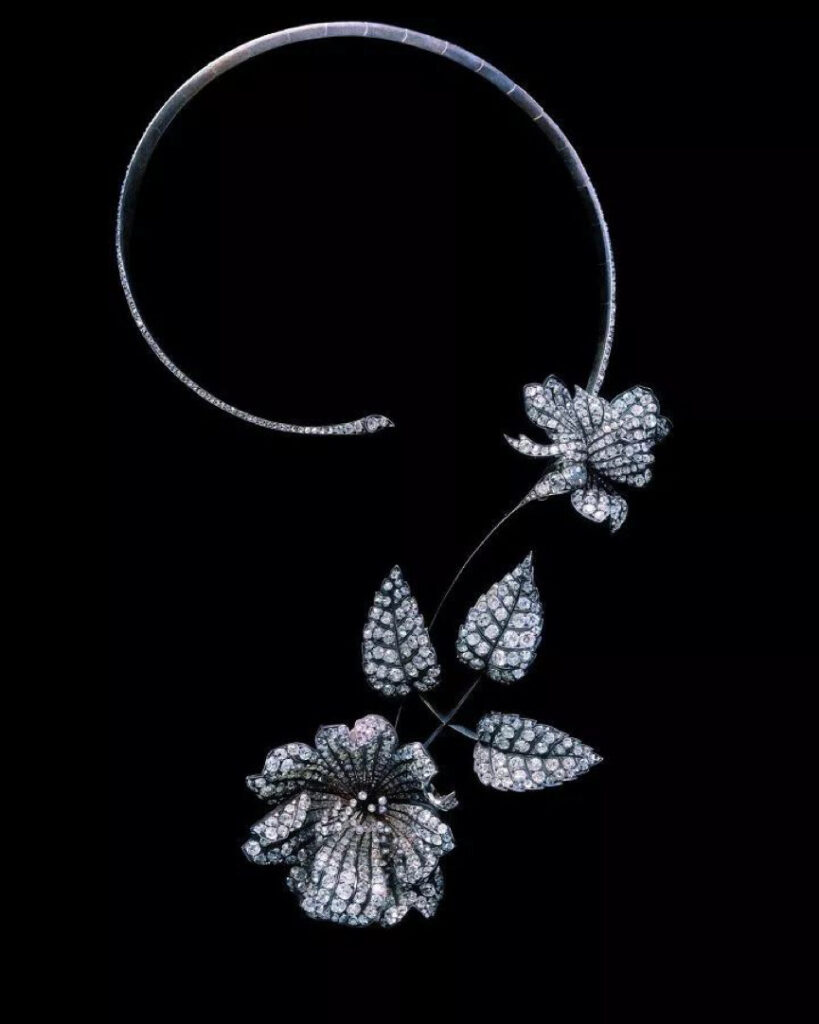
After more than 140 years, this piece remains an emblem of the house’s style. This year, Boucheron reinterprets the Question Mark necklace with fresh creativity, paying homage to this classic work and continuing the legendary story of the Question Mark necklace.
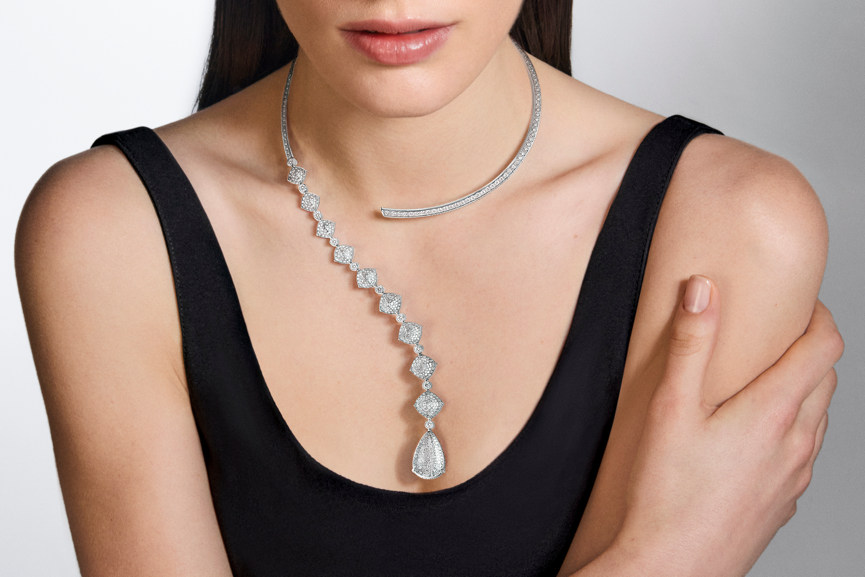
The Classic Heritage of the Question Mark Necklace
Ivy Inspiration
The story of the Question Mark necklace begins with a strand of ivy. In 1879, Frédéric Boucheron commissioned French artist Paul Legrand to create the first sketch for the Question Mark necklace. The artist masterfully depicted a long strand of ivy. Two years later, in 1881, Boucheron crafted its first iconic Question Mark necklace based on this design.
The house’s founder, Frédéric Boucheron, had a particular fondness for the ivy motif, and between 1881 and 1889, the Boucheron workshop skillfully created six Question Mark necklaces inspired by it.
Rather than following the trend of floral patterns commonly used by other jewelers at the time, Boucheron innovatively drew inspiration from the ivy vines winding around the arcades of the Palais Royal, where their first boutique was located. This fresh interpretation of the Question Mark necklace showcased the house’s bold and unique natural aesthetic, vividly depicting nature’s unbridled freedom, perpetual renewal, and vibrant beauty.
In crafting this necklace, the artisans poured great passion and effort into meticulously sculpting every detail of the ivy, striving to accurately reproduce its natural form. The bright green of the emeralds brilliantly complements the dazzling luster of the rhodium-plated white gold. Enhanced by the ancient trembling technique traceable to 19th-century jewelry pieces, each leaf on the necklace seems to come alive, gently swaying with the wearer’s graceful movements.

Set with diamonds
1881
©Boucheron Archives
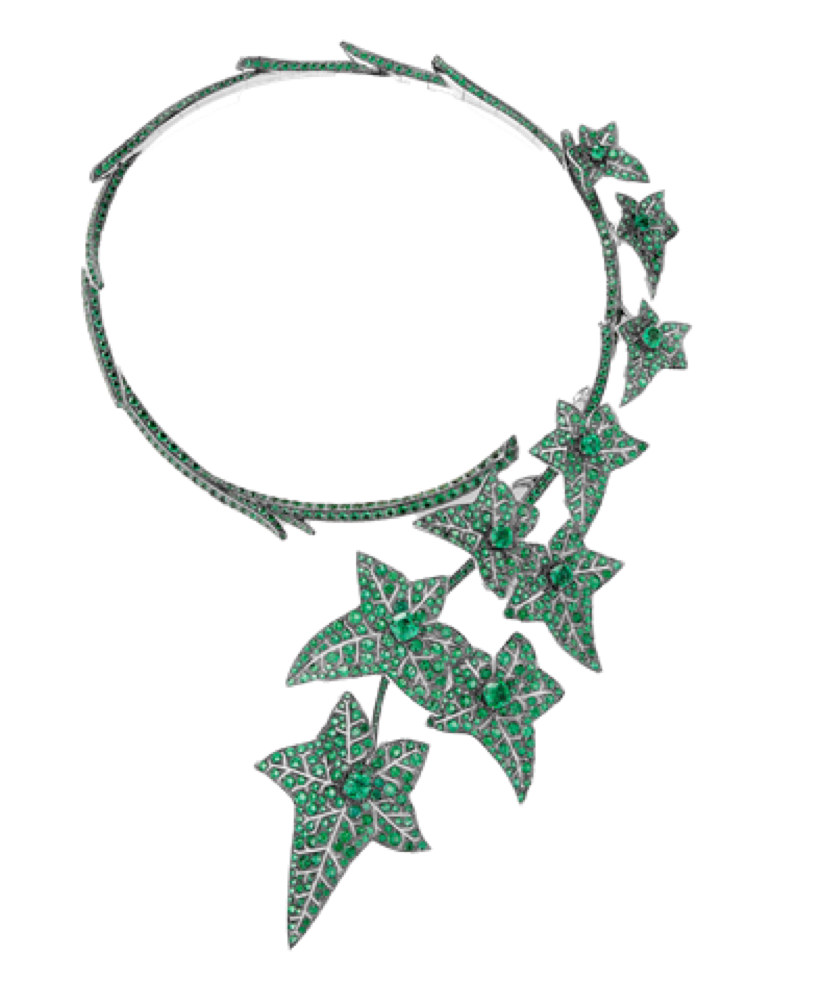
Made of white gold, paved with emeralds,
Surface coated with black rhodium
Peacock Feather Inspiration
The peacock feather (Plume de Paon) first appeared in Boucheron’s hair ornaments and brooches in the 1860s, quickly becoming a historic classic pattern for the house. With his keen eye, Frédéric Boucheron chose this natural motif as inspiration, designing two ingenious Question Mark necklaces in 1882 and 1883 respectively.
The latter was acquired by Grand Duke Alexei of Russia. At the time, the house innovated by developing a unique craftsmanship that could vividly reproduce the subtle details of peacock feathers. Thanks to an innovative articulation system, each part of the feather could move and unfurl gracefully, resembling a free-spirited bird.
These exquisite details were all hand-carved by Boucheron artisans, perfectly recreating the soft touch and natural beauty of feathers. Today, Boucheron’s creative workshop carries forward the essence of traditional techniques, reinterpreting the peacock feather design with vibrant blue hues that complement the central sapphire, showcasing a captivating brilliance.
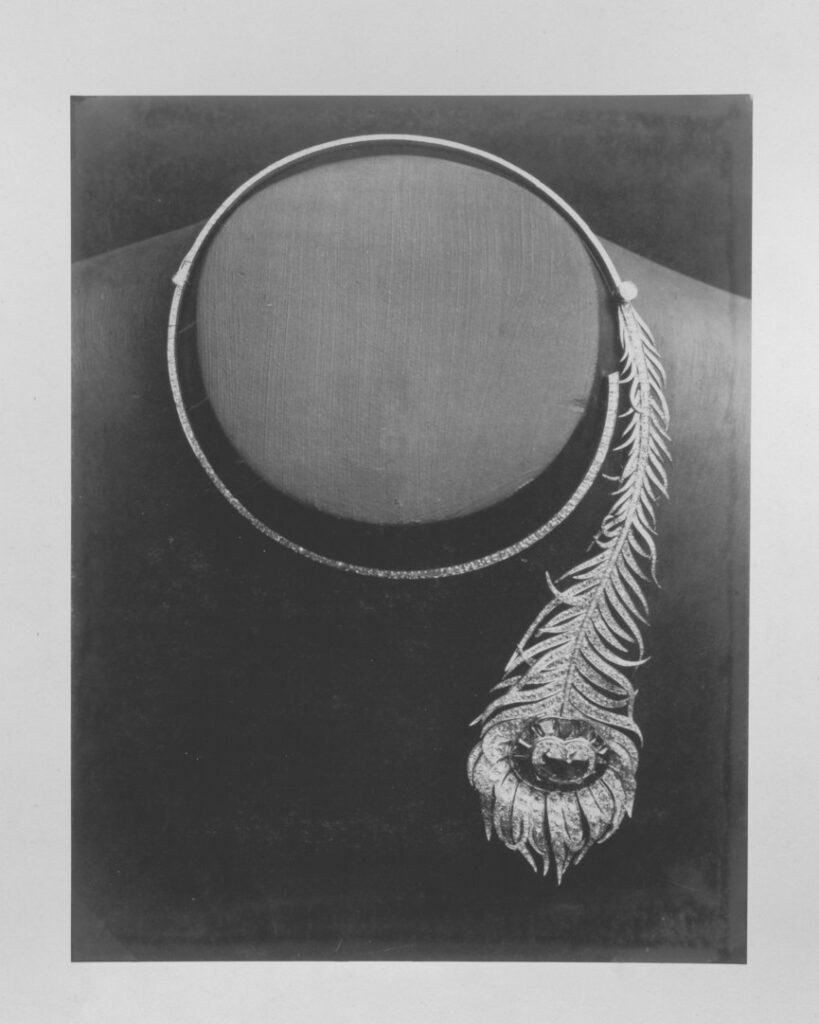
Set with diamonds, emeralds, and sapphires
1883
©Boucheron Archives

Made of white gold, set with a 6.34-carat oval-cut
Ceylon sapphire, adorned with diamonds and sapphires
Olive Leaf Inspiration
The fluid design of the new Laurier Question Mark necklace draws inspiration from an olive leaf-themed necklace created by the house in 1886. The piece is delicately adorned with Mozambique rubies, reminiscent of ripe fruits hanging from a tree, radiating brilliance. Boucheron’s artisans have skillfully combined various setting techniques, including openwork, lattice, pavé, grain, and snow setting, to meticulously delineate every detail of the leaves.
Notably, each leaf is hand-carved by the house’s craftsmen without the use of any machinery, taking at least 30 hours to complete. The openwork design on the back of the leaves allows the gems to emit dazzling brilliance while adding a light and fluid beauty to the necklace. To authentically recreate the natural movement of plants, the artisans ingeniously designed three connecting components around the main body of the necklace, allowing it to elegantly conform to the wearer’s neck.
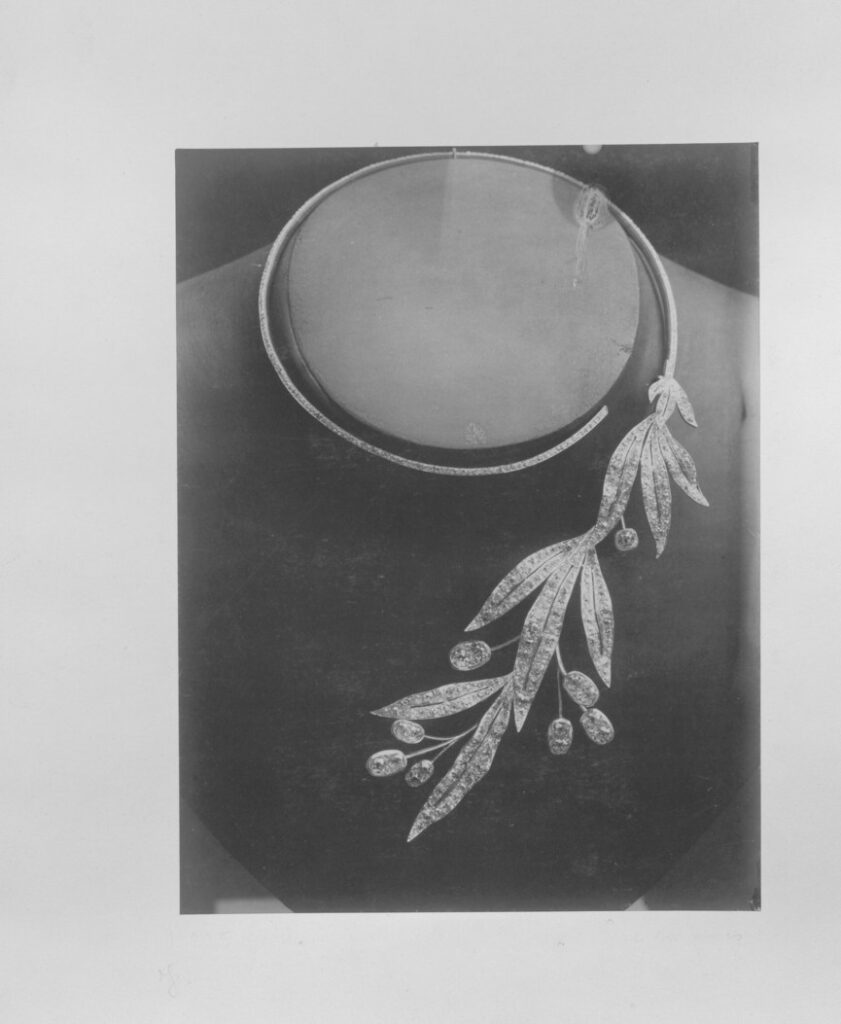
Set with diamonds
Circa 1883
©Boucheron Archives

Made of white gold, set with 19 oval Mozambique rubies,
Totaling 22.69 carats, paved with diamonds
Laurel Leaf Inspiration
Boucheron’s creative workshop has reimagined the classic laurel leaf element, passionately crafting a new Question Mark necklace. This piece draws inspiration from a necklace created in the 1880s, preserved in the house’s archives. The new creation features an ingenious clasp mechanism, offering the wearer multiple styling options — it can be transformed into a long necklace, short necklace, brooch, or hair ornament.
The entire piece showcases Boucheron’s extraordinary jewelry craftsmanship and is a heartfelt tribute to nature’s beauty. Boucheron’s artisans employ a unique “knife-edge” (fil-couteau) technique, using fine gold wire to create a hidden structure that imparts a light and fluid beauty to the piece.
Each leaf is handcrafted, with the metal surface featuring a unique openwork technique that makes the lattice-set diamonds even more brilliantly radiant. Red tourmalines are cleverly suspended on the leaves, resembling ripe fruits ready to be picked.
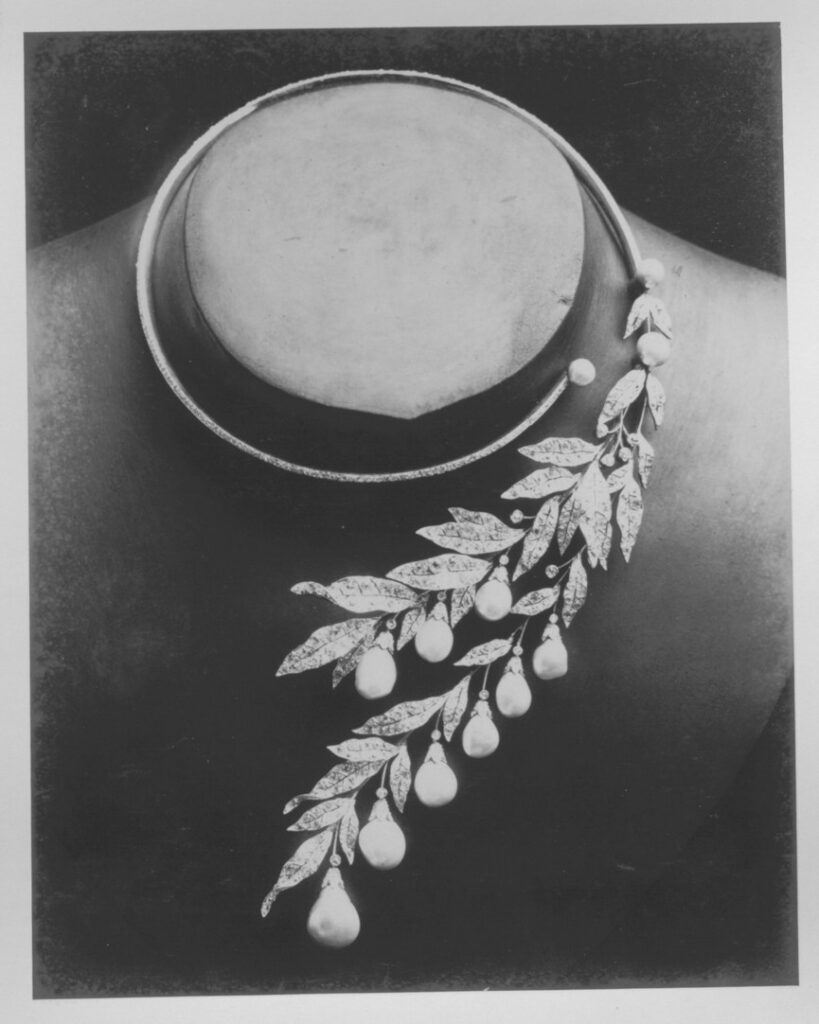
Set with pearls
1880s
©Boucheron Archives

Made of white gold, set with 7 pear-shaped red tourmalines,
Totaling 88.51 carats, paved with diamonds
This necklace adheres to Boucheron’s concept of versatile jewelry,
offering multiple ways of wearing
New Reversible Question Mark Necklace
Boucheron has masterfully crafted three color variations for the new reversible Question Mark necklace: one set with vibrant and gorgeous red tourmalines, another with rich green tourmalines, and a third with deep blue tanzanites.
On the front of the necklace, carefully matched gemstones appear even more striking against the backdrop of metal foil. The reverse side uses custom-cut crystal material that sparkles brilliantly, with densely paved diamonds adding extra radiance.
The house’s exquisite craftsmanship is also evident in the collar part of the necklace, which is paved with diamonds on both sides, and even the edges are finely set with diamonds, allowing the entire piece to emit a captivating brilliance. This piece features simple and fluid lines, drawing inspiration from a 1884 creation in Boucheron’s archives, specially commissioned by American businessman Cornelius Vanderbilt.
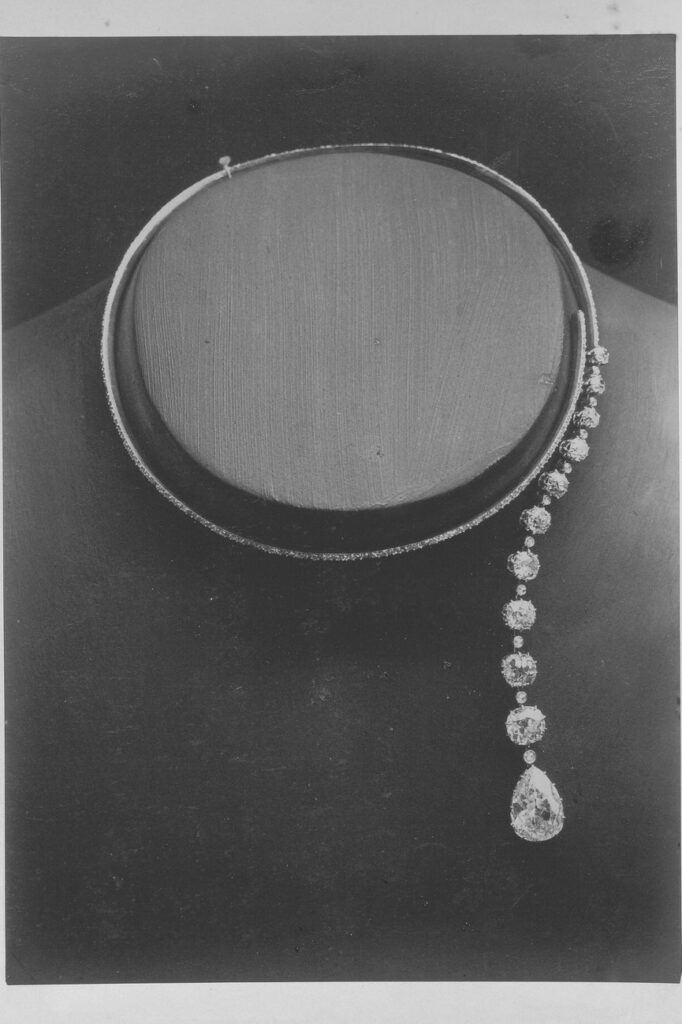
1884
©Boucheron Archives

Made of white gold, set with 9 sugar-loaf cut red tourmalines and
1 pear-shaped red tourmaline (total weight 41.54 carats) and crystal, paved with diamonds
This necklace adheres to Boucheron’s concept of versatile jewelry,
offering multiple ways of wearing

Made of white gold, set with 9 sugar-loaf cut tanzanites and
1 pear-shaped tanzanite (total weight 56.46 carats) and
crystal, paved with diamonds
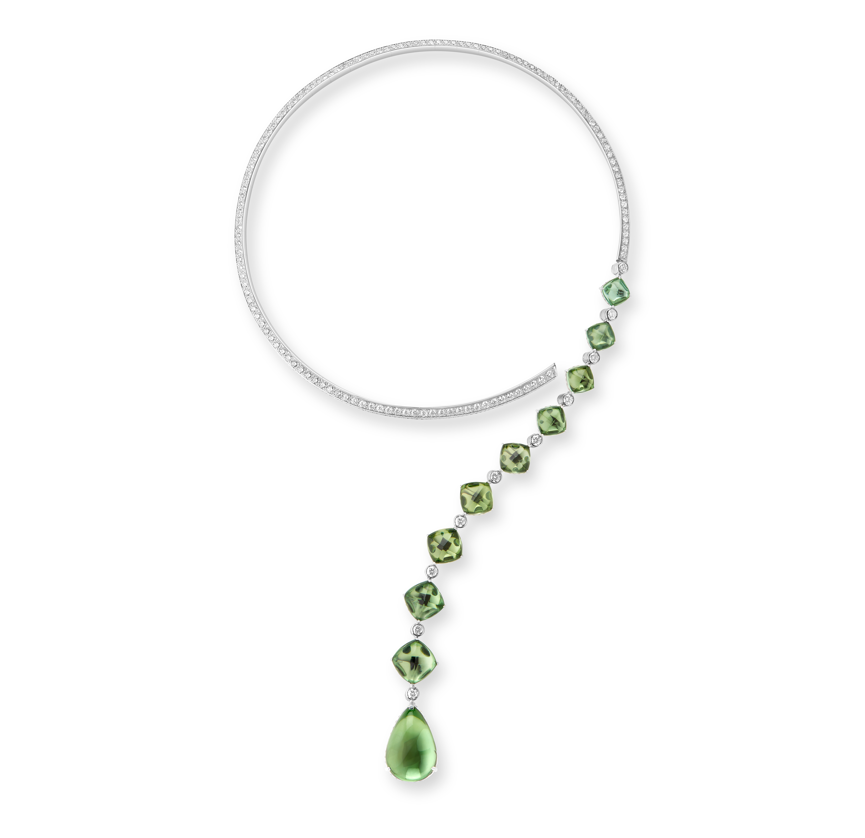
Made of white gold, set with 9 sugar-loaf cut green tourmalines and
1 pear-shaped green tourmaline (total weight 44.81 carats) and
crystal, paved with diamonds

Set with crystal, made of white gold, paved with diamonds
This necklace adheres to Boucheron’s concept of versatile jewelry,
offering multiple ways of wearing
The Elegantly Exquisite Eternity Question Mark Necklace
The new Eternity Question Mark necklace outlines a minimalist design with elegant curved lines. Consistent with all Question Mark necklaces, this piece also embodies the house’s ingenious craftsmanship. The central stone of the necklace can be flexibly detached, transforming it into a more streamlined choker to meet the needs of different occasions. This concept of versatile jewelry is a classic theme that runs through the history of the Question Mark necklace.
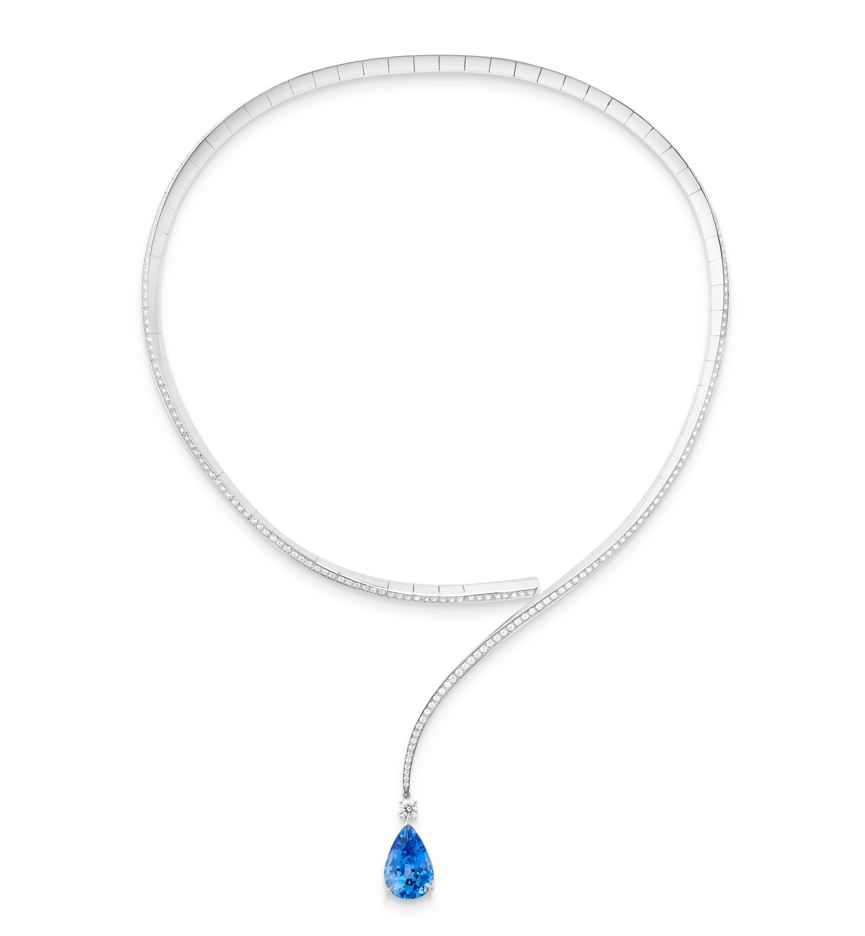
Helen says that Boucheron’s Question Mark necklace encapsulates over 140 years of the house’s craftsmanship essence and is also an important piece in the brand’s developmental milestones, recording its resonance with women of every era.
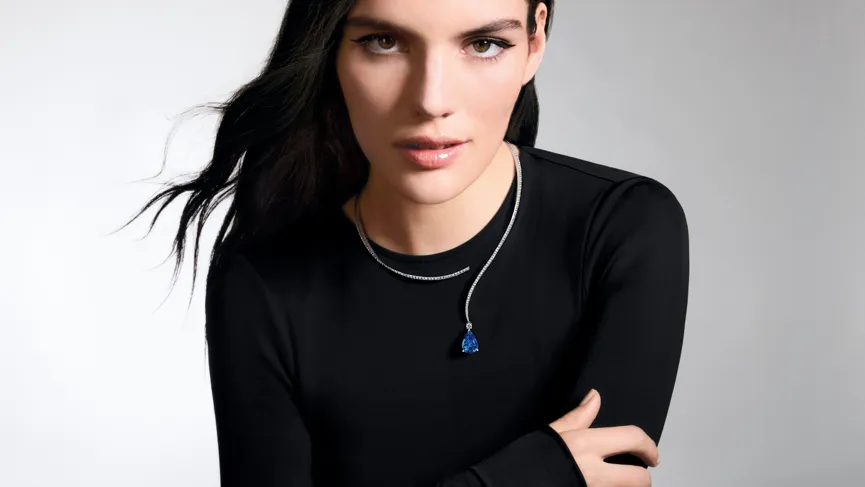
A New Twist on an Icon: Boucheron’s Reversible Question Mark Necklace Steals the Spotlight!
Tweet
Further Reading
